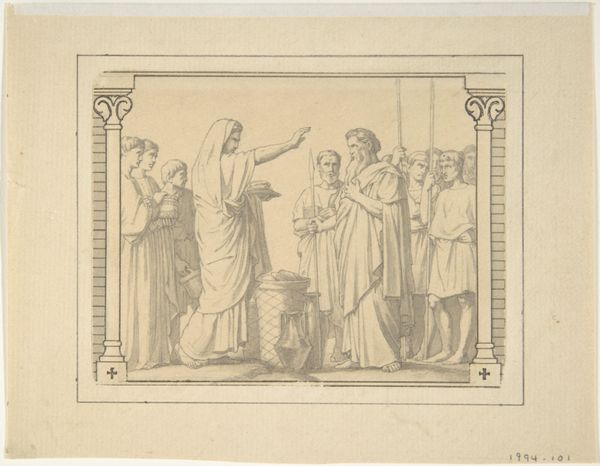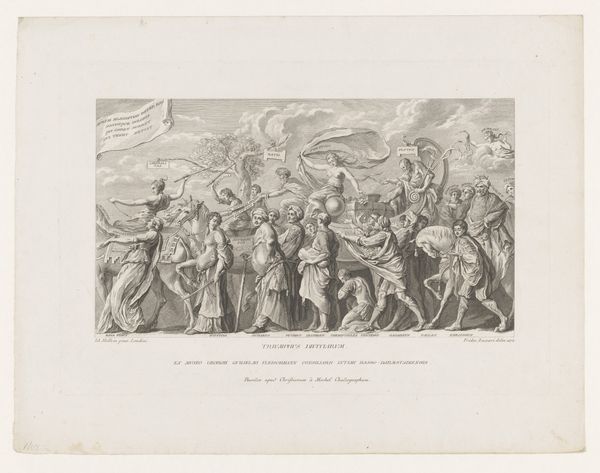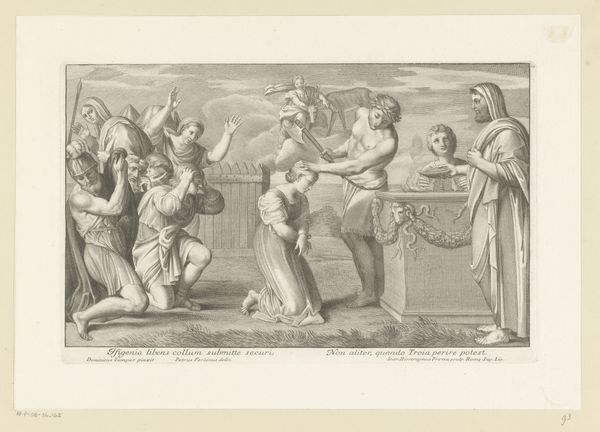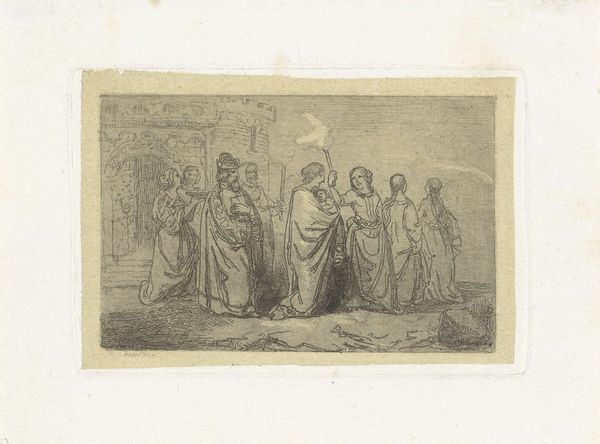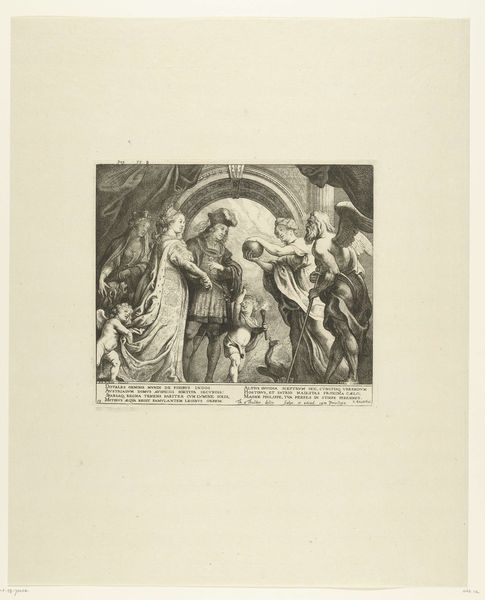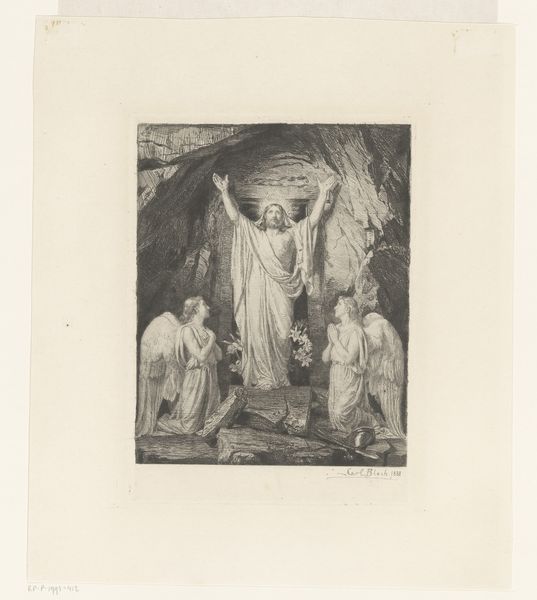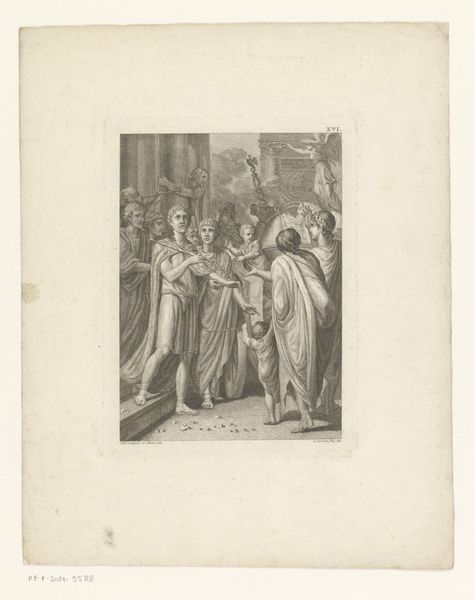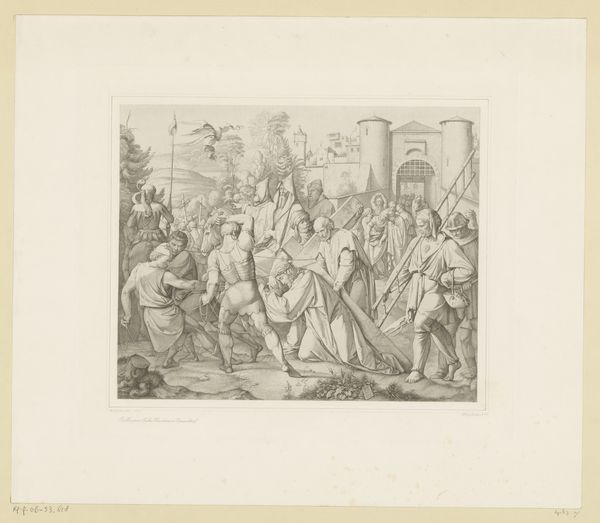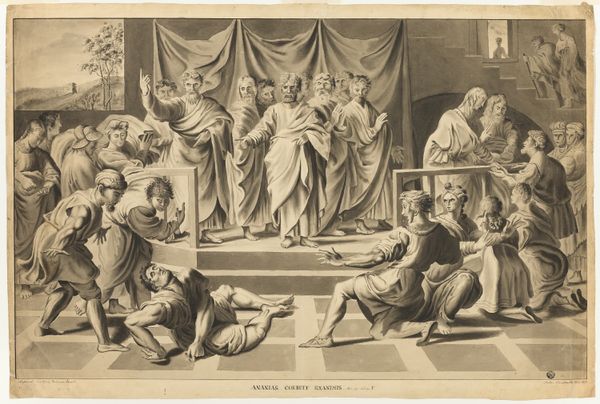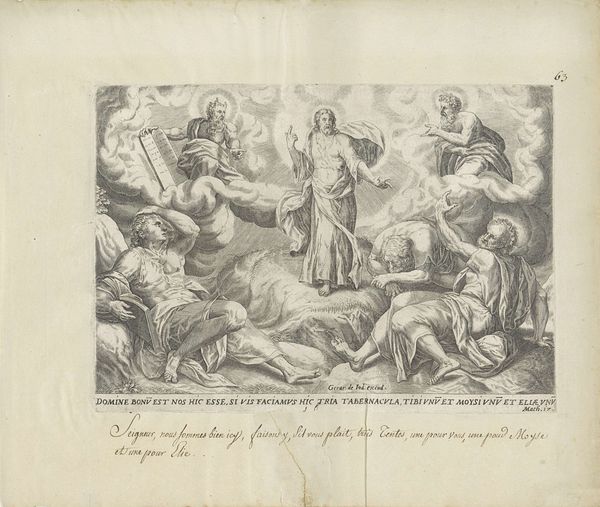
Pastoral Life of Saint Geneviève (right panel) c. 1888
0:00
0:00
drawing, lithograph, print, etching, paper, pencil
#
drawing
#
lithograph
# print
#
etching
#
etching
#
paper
#
pencil
#
pencil work
#
history-painting
#
academic-art
Dimensions: 240 × 378 mm (image); 445 × 550 mm (sheet)
Copyright: Public Domain
Curator: Georges-William Thornley's "Pastoral Life of Saint Geneviève," created around 1888, presents a rather intriguing narrative. Executed as a lithograph and etching on paper, it currently resides here at the Art Institute of Chicago. Editor: The scene feels dreamlike, almost faded in its presentation, and creates a strong sense of unease for me. The halos and figures give religious implications but the somber tone mixed with a dragon sitting in the foreground... what's happening here? Curator: The print portrays a procession of haloed figures, including Saint Geneviève herself, juxtaposed with a dragon. Thornley references the Academic style prevalent during the late 19th century. This approach often romanticized historical and religious events to reinforce cultural and moral values. Editor: I think there’s a tension at play. The choice to portray a saint’s life implies an intent to uplift, however I feel that it is undercut by the presence of the dragon, an undeniable symbol of chaos, paganism and the untamed. Its positioning so centrally feels like Thornley’s wrestling with established doctrines. I can’t help but read this from a perspective questioning institutional power. Curator: An interesting view. The dragon, one might argue, traditionally represents evil overcome by saints. Consider how the Catholic church utilized tales of overcoming pagan symbols to assert cultural dominance, solidifying a historical narrative in the 19th century context that we're viewing the piece in. Thornley likely draws upon the common iconography. Editor: Yet, even when looking into hagiographies, there’s inherent ambiguity. We cannot divorce how depictions are instrumentalized. And in that instrumentaliation, we see the suppression of alternative spiritual narratives and marginalized communities. This artwork presents what at first viewing might appear to some, even with a history-tinted gaze, to simply a display of good prevailing against evil, a powerful but limited point of view if you ask me. Curator: Perhaps, then, we see not simply a representation, but a questioning. It mirrors the increasing secularization occurring at the time and doubt of singular narratives that continue to be challenged today. The artist presents an accepted symbol next to an opposing one to inspire discussion, doubt and the expansion of both artistic and spiritual conventions. Editor: That lands with me. What appeared like a passive illustration, and an uneven display of both figures, begins to show signs of struggle within social and individual historical beliefs. Curator: Yes, exactly. In viewing art, there are so many considerations, from art-historical and art theory, to socio-cultural viewpoints to see, contextualize and experience all within it.
Comments
No comments
Be the first to comment and join the conversation on the ultimate creative platform.
